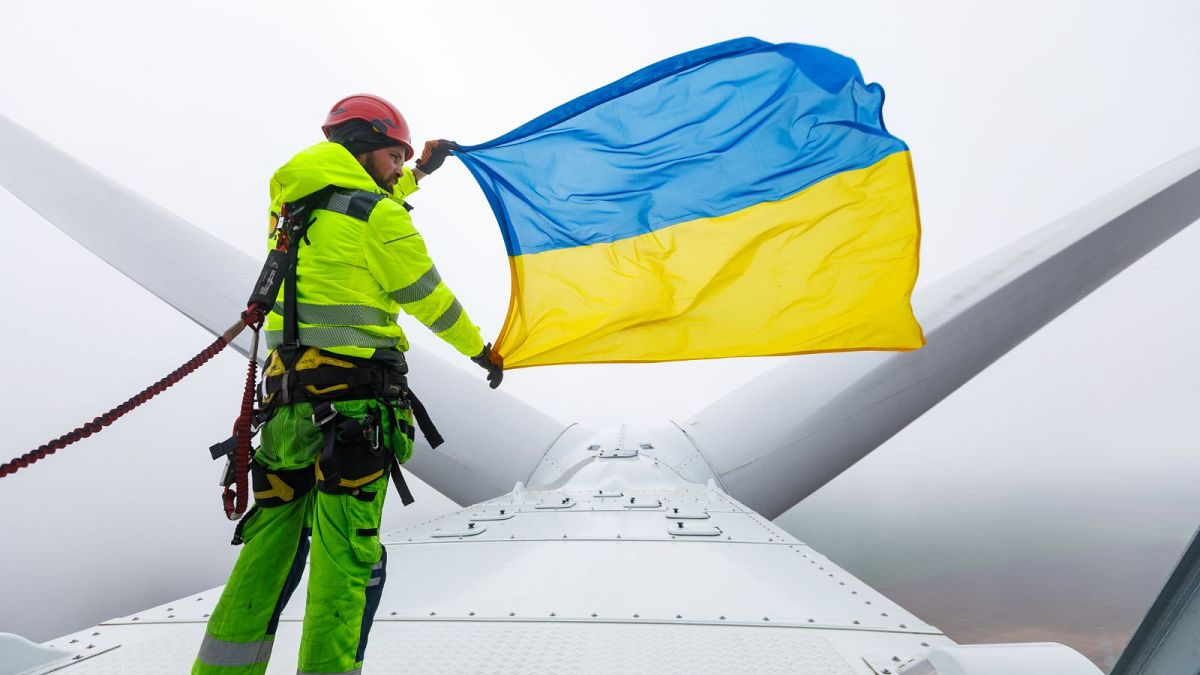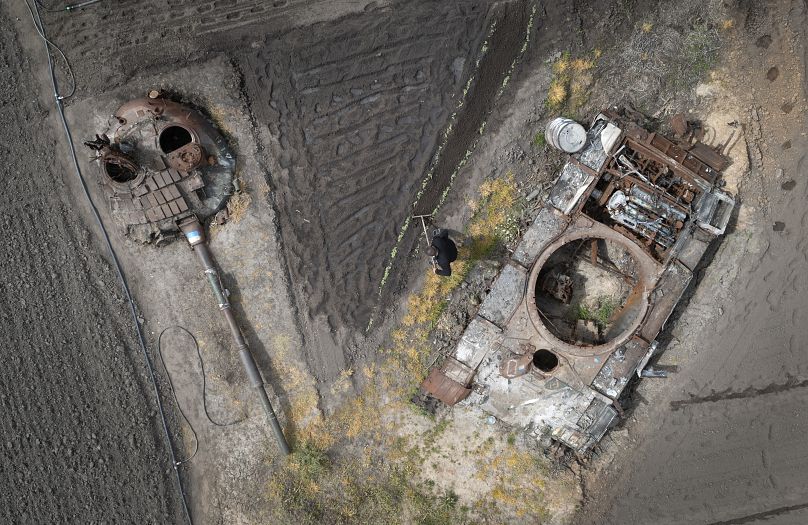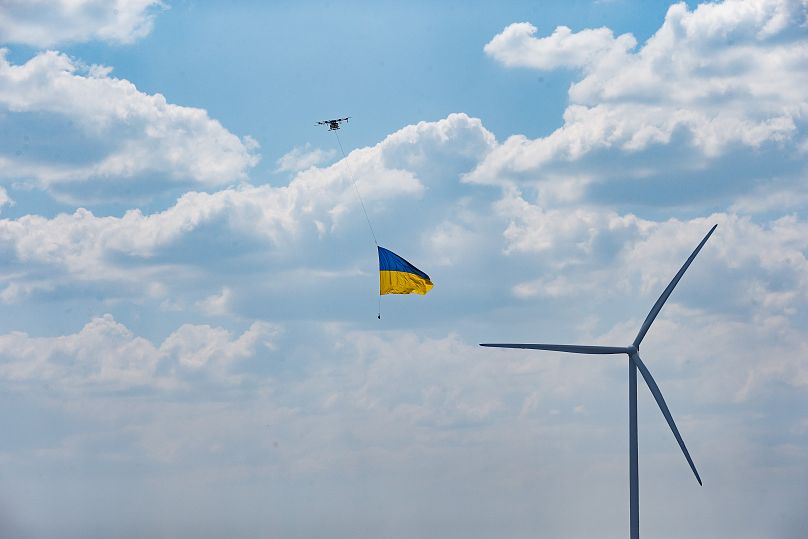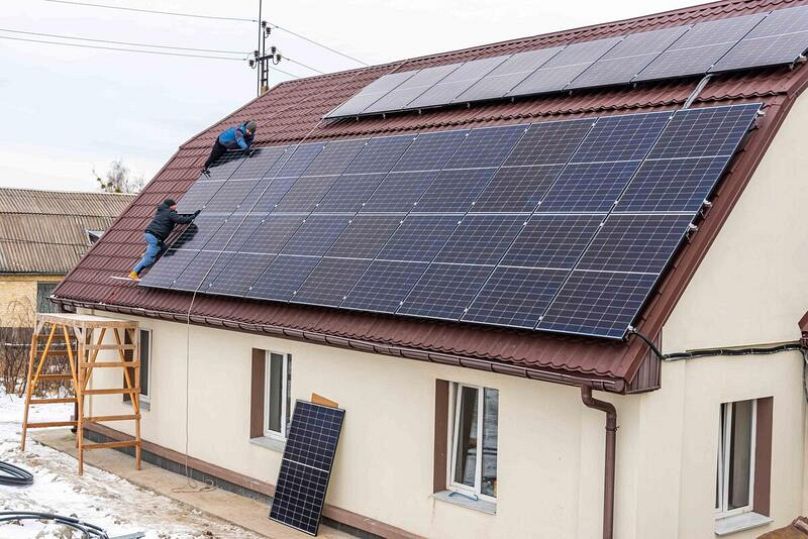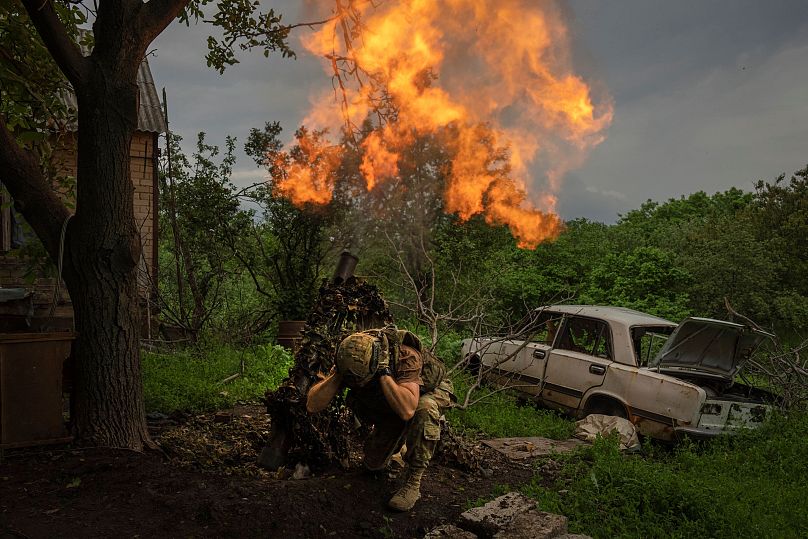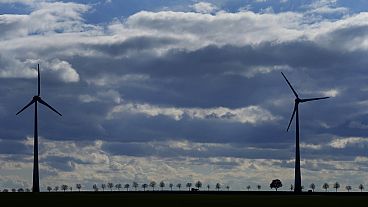On the second anniversary of Russia’s invasion, Ukraine is determined to rebuild stronger and greener - here's how.
Shortly after midnight on 24 February 2022, Ukraine disconnected itself from Russia’s power system. Four hours later, Russia launched a full-scale invasion which continues to inflict untold suffering on the second anniversary.
Energy is an inseparable part of the war. By unplugging from Russia, Ukraine had planned to prove that it could operate independently ahead of integrating with Europe’s network. It was thrust into ‘island mode’ for three weeks before the connection was made.
Ukraine is far from being an island now; it becomes a closer part of the continent every day, inching towards EU accession while channels of global support pour into the country.
In aligning itself with the EU’s values, Ukraine is stepping up its environmental efforts even while the war rages. The invasion of Ukraine has also catalysed the EU’s climate journey by forcing it to relinquish Russian gas and oil and, under the REPowerEU plan, phase out fossil fuels faster.
“Ukraine must be rebuilt with renewable energy and must become a green economy with no returning back to the dark fossil fuel past,” Svitlana Romanko, founder and director of Razom We Stand tells Euronews Green.
Ukraine has made progress not only despite but because of the war, which is why we’re spotlighting it as our Green Country of the Month.
Ukraine is investing in big renewables
Around 50 per cent of Ukraine’s energy infrastructure has been affected, damaged or destroyed by Russian forces.
Zaporizhzhia nuclear power plant - Europe’s biggest which used to supply a fifth of Ukraine’s electricity - was captured early on. The Kakhovka Dam with its huge hydropower plant was destroyed last summer. And both winters have seen massive attacks across the thermal power system.
“What we can learn from that,” says Anna Ackermann, a climate and energy expert at Ukraine’s largest environmental NGO Ecoaction, “is that any big centralised energy infrastructure is highly vulnerable because it's very easy to get information of where it is.”
Russia isn’t only able to consult satellite images - it already has the plans of plants that were constructed during Soviet times.
Large-scale renewables have suffered too. The Ministry of Energy states that 30 per cent of solar and 90 per cent of wind plants have been disabled or occupied.
But Ukraine’s power system perseveres. Yesterday (23 February), the ministry reported that it sent surplus electricity to Poland, as a result of excess power generated by solar plants.
President Volodymyr Zelenskyy has said that he wants Ukraine to be a “green energy hub” for Europe. The country is not waiting for the war to end to make a start on that mission, with a number of impressive renewable energy projects announced in the last two years.
The first stage of the Tyligulska wind power plant was completed by DTEK (Ukraine’s main private energy company) in May last year, the first to be built in a conflict zone. It’s just 100km from the frontline in the southern region of Mykolaiv, with slender turbines to avoid bombing, and is already supplying clean electricity to some 200,000 households.
Meanwhile, Ukraine’s most powerful turbine manufacturer, Fuhrländer Windtechnology, has opened a new factory in the safer western region of Zakarpattia (the only oblast not to have been struck by Russian missiles since 2022).
Remarkably, Ukraine built more onshore wind farms (three) than England in the first year of war. The government is now targeting a 50 per cent share of renewables in Ukraine’s power mix by 2035 - a big leap from 15 per cent in 2021, though civil society groups want to see its climate ambition raised further still.
Communities are realising the power of decentralised renewable energy
“The resilience in Ukraine is a lot about the communities,” Ackermann tells us, and that applies to energy resilience too.
Of course the energy picture is mixed across the country, with western cities better placed to co-finance green projects, while much of the east is in survival mode. During the beginning of the invasion, western municipalities that had started localising and diversifying their energy away from gas were better able to support themselves and withstand the coldest periods, Ackermann says.
Ecoaction was already encouraging people to become prosumers, but there’s a new vigour to the community projects that have sprung up in recent months. In Horenka, a village northeast of Kyiv that was heavily shelled and occupied for over a month in 2022, local authorities and green NGOs rebuilt the hospital with solar panels and a heat pump.
Close by in Irpin town, where some of the worst war atrocities took place, a destroyed school has been rebuilt with solar panels so children could return and study even during blackouts.
“These great and bright examples are popping up here and there, but to make it really a rebuilding effort, we need to scale up,” says Romanko.
New research from Razom We Stand has found that replacing all of Ukraine’s coal-powered plants with renewable energy would cost around $17 billion (€15.7 billion) - an achievable amount, according to the director.
“This commitment to become a green energy superpower, an absolutely new economy not based on fossil fuels, excites me the most because it means we eliminate poverty,” adds Romanko. “We eliminate social and climate injustice. We eliminate the energy-consuming economy that we've recently been suffering from. That's a really exciting dimension of how our country can be rebuilt.”
Ukraine is pioneering a way to count the environmental cost of war
Russia’s full-scale invasion has so far wreaked €56.7 billion worth of environmental damage, Ukraine’s Ministry of Environmental Protection and Natural Resources estimates.
“The documentation of environmental damage is the work of our environmental inspectors who work 24/7 and even in dangerous territories very close to the frontline,” Ukraine’s environment minister Ruslan Strilets tells Euronews Green.
“For us, it's very important to report every square centimetre of polluted soil and to calculate every cubic metre of polluted air.”
This unprecedented effort isn’t just about holding Russia accountable. Assessing the damage to ecosystems is the first step to recovering nature post-war. And in striving to be the first country to reckon with environmental crimes, Ukraine’s work has global relevance.
No single internationally agreed methodology currently exists - something Ukraine is trying to change with a new environmental declaration. The Environment Ministry has even launched an app (called EcoZagroza) where people can log environmental damage, and check on air quality, radiation and water pollution levels.
“We want to decrease the potential of future wars,” Strilets says, “I want future aggressors to understand that war is expensive because of the cost of destroying nature. Because destroyed nature is a totally destroyed future.”
Zelenskyy’s 10-point peace plan emphasises the need to prevent ecocide and protect the environment, starting by demining and restoring water treatment facilities.
‘We are not giving up’: Ukraine’s environment ministry continues to do vital work
The sheer number and breadth of announcements emerging from the Ministry of Environmental Protection and Natural Resources is in itself impressive.
This month alone has brought updates on Ukraine’s waste management reform; the creation of a water resources body; a new method to calculate greenhouse gas emissions from the war; and new legislation to protect wolves.
“Despite the war, we will not stop developing our environmental sector,” Strilets says. The roadmap for these reforms is based on EU recommendations. Proper waste management is one key condition - as is tackling corruption.
Partly to that end, the ministry has been busy digitalising its environmental services. Forest reform is already showing results, Strilets explains. The forestry agency has been refashioned into a single-state enterprise, with digital logging permits - for example - helping to make the sale of timber more transparent.
The latest report card from the European Commission gave Ukraine a 2 out of 5 for environmental progress, up from 1 in 2022 and the previous seven years.
“It’s a crazy rhythm,” Ecoaction’s Ackermann says of Ukraine’s rollout of renewable projects. “We live in the mode where things have to be happening quickly, otherwise you don't see the results and people get very upset.”
But trying to find a balance is crucial, she says. How much can Ukraine focus on building back better and greener, when the financial resources and manpower could be given to the army?
“[People] just want to keep on living,” she says, “and they want to have a future.”
